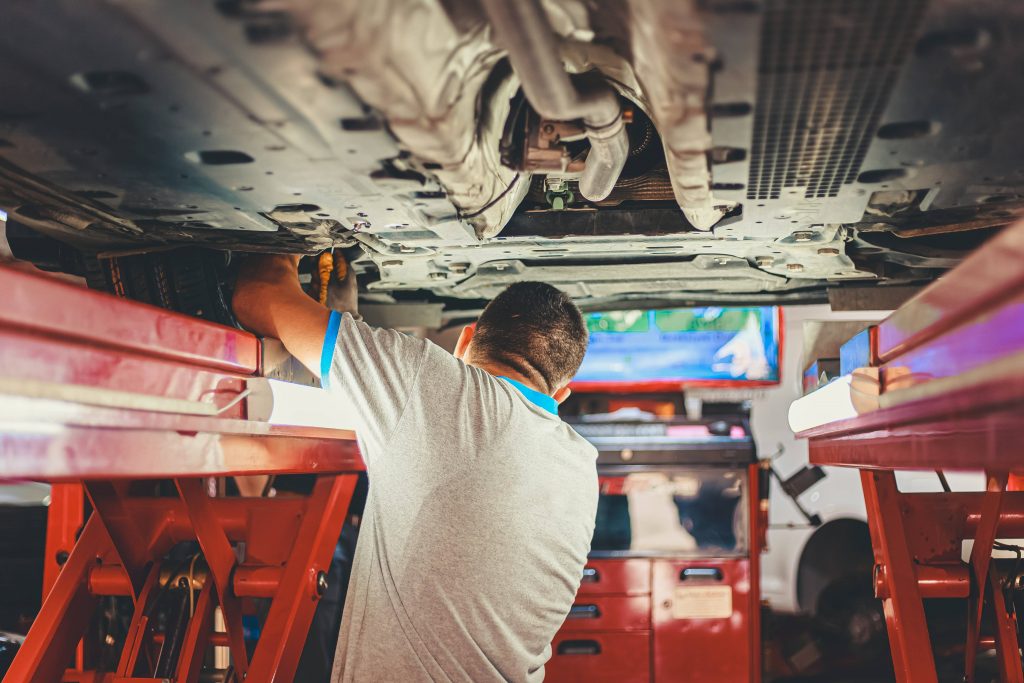The world-wide semiconductor chip shortage has disrupted the vehicle industry.
With the pandemic, the demand for consumer electronics has increased, which in turn ramped up demand for semiconductor chips. This has resulted in a world-wide chip shortage and a drop in vehicle production.
For dealers, less vehicles means less sales. Analysts say this trend will continue, so dealers need to urgently think about how to make up for this lost revenue.

The Focus in the Coming Years Will Be on Parts and Services
A key indicator for these turbulent times is the Absorption Rate. This KPI is defined as the ability to cover the dealership’s fixed expenses with service sales and their corresponding parts sales.
Bob Atwood, an After-sales Management Instructor at the NADA Academy (USA), states that “one of the things we’ve learned during the pandemic is that Service is the backbone of the dealership. Not the back-end, but the backbone.”
“If you can’t sell vehicles, but you can service them, you better be close to 60% absorbed with the Service Department, or you aren’t going to survive”.
For a dealership that lags below 60%, Atwood advises focusing on gross profits from service maintenance. Ideally, dealers should be retaining 38% of the gross from parts they sell, 74% of service labor, and 65% of bodywork labor.
Subscribe to Our Newsletter
You will receive best practices, new articles, webinars, trainings, updates and more!
» Subscribe
Another key point that Atwood mentions is that when you sell a vehicle, you make a 5% gross, whereas in the Service department that margin is much higher. That’s where the real money is made.
How to Improve This Indicator?
The answer is simple: by generating more revenue. But this is easier said than done. So we propose focusing on what can distinguish your dealership: Convenience, Expertise, and Opportunity.
Offer special advantages to attract customers
Customers will choose your workshop if you streamline their experience for booking and canceling appointments. Some dealerships have even implemented new practices such as the pick-up modality, in which they pick up the vehicle for repair and then return it to the customer, so customers don’t even need to leave their home.
Internally, with a centralized appointment scheduler, you can avoid delays (the technician knows the parts required in advance before the customer arrives), appointment overlap, minimize no-shows, reschedule appointments to avoid idle hours… besides offering advantages, you are showcasing an image of efficient and professional service.
4 Opportunities You Cannot Overlook
Boost Upsells
When the customer arrives at the workshop, the service advisor or technician should try to sell something more than the service the customer came in for. You should have a scripted speech and an enticing offer to make the most of this point of contact.
Remember that customers don’t always know what their vehicles need, and it’s your expertise that will be useful to offer services or parts that not only increases revenue but also improves customer satisfaction with their vehicle.
Ideal Times to Sell More
It’s important to shift from a reactive sale (the customer comes in) to a more proactive sale. If the customer brings in their vehicle, let’s offer something else.
For example “around the tires” campaigns check brakes, shock absorbers, tires, alignment, etc. These are clear sales opportunities. Other key campaigns are seasonal: get ready for the summer holidays, winter battery reviews, alignment and balancing in autumn, etc.
Every contact is a sales opportunity.

Be Where Customers Are
In the COVID-19 scenario, purchases have moved massively to the web. Ecommerce (which was already on the rise) became the only option to search, investigate, and buy.
Ecommerce global sales increased 27.6% in 2020, more than double the pre-pandemic growth estimate.
Your target market spends more and more time on websites and social networks. This is why it’s essential that dealers establish and enhance their online presence. A minimum investment of time and money in social networks can help you gain a larger market share.
Pandemic or Not, All Vehicles Need Maintenance Services
To end this article, let’s look at two topics that are key for increasing service sales:
- Analyze your parts and service sales potential: Your DMS probably has this information; you only need to use it. Did customers purchase all the services and parts that their vehicle models need for the year? If they didn’t, are you able to identify them? Have you planned campaigns to call them and offer these services and parts?
- Automatic maintenance service reminders: This is related to the previous point. Are you contacting your customers so they choose you for their maintenance services? Ideally your system can calculate the estimated date of each customers’ next maintenance service and generate contacts automatically. In this way, you can make sure that customers bring their vehicles to your workshop and not your competitors’.


